Your Psoas muscles are the keys to good posture and pain free movement. Read that again. Your Psoas muscles are the keys to good posture and pain free movement.
In the movement world whole books have been written about the Psoas ( and I have read them so you don’t have to!). This muscle is so influential on the way we move that it is worth getting to know it a little better.
We get our Psoas from our evolutionary history as a quadraped (four legged mover). Other quadrapeds have Psoas muscles, dogs, cows and horses for example all share this muscle arrangement with humans.
We are obviously not quadrapeds anymore and our Psoas muscles have adapted to support us to stand upright and to be bi-pedal (two legged mover). However if you suffer from sway back, weak core, tight mid back, rib thrust forward and forward head posture, chances are your Psoas is the key you are looking for to restore your posture and make moving feel good again.
This article will cover some basic anatomy about where and what your Psoas muscles are and what they do. I’ll also cover how your Psoas influences your posture and movement in a positive or negative way. I’ll explore common symptom from a tight Psoas and give you range of ways to move to nurture your Psoas to restore healthy function to these muscles.
I’m excited to share this with you! Enjoy X
Your Psoas and why you need to know it
Your Psoas muscles are the muscles that join your upper body to your lower body. In a quadraped animal, in this case a dog, the Illiopsoas looks like the image below.
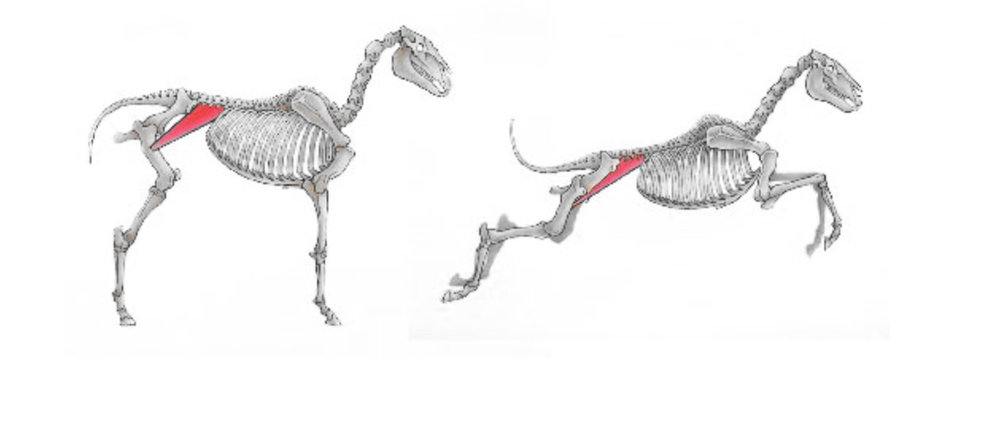
In a human, a bi-pedal animal, it looks like the Illiopsoas muscle group looks like this:
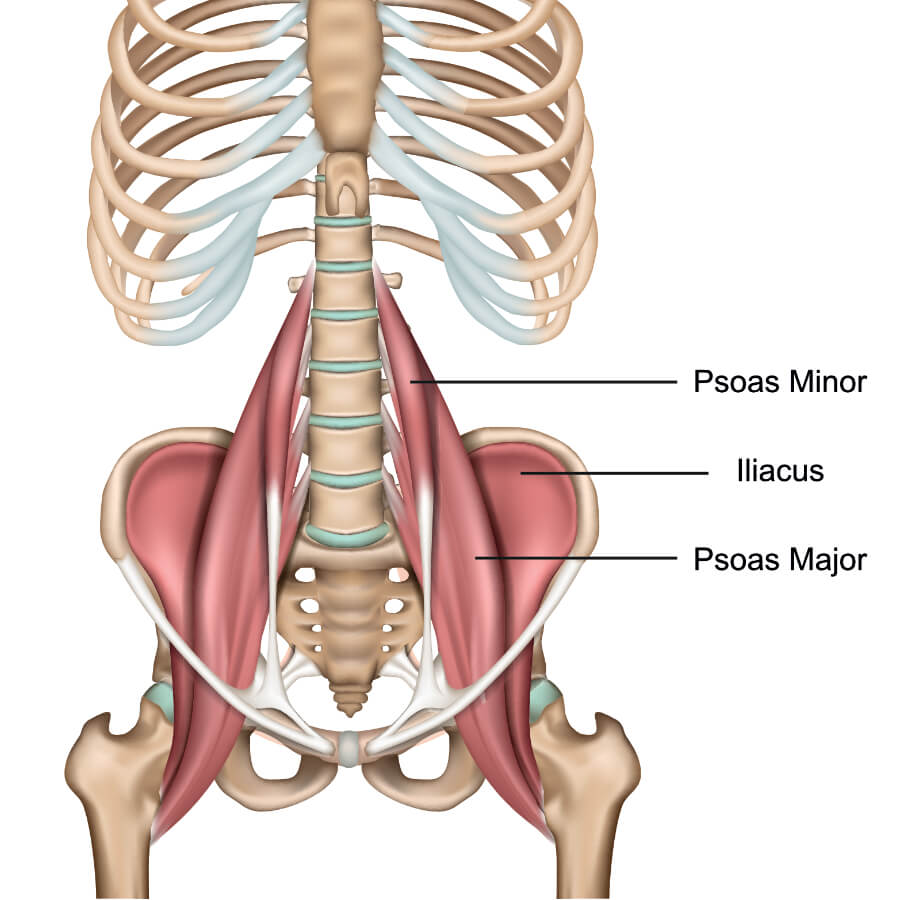
Your Iliopsoas muscle group is made up of three muscles, Psoas Minor, Psoas Major and the Iliacus, these occur on the left and right sides of the spine attaching the spine to the pelvis and the legs.
As you can see from the image above the length and health of the Psoas muscles (Minor and Major) will have a big influence on the position of your pelvis and your spine.
As the tenderloin, or “filet mignon,” of the human body, a healthy psoas is a juicy, supple, dynamic tissue that supports full body expression and responsiveness.
Liz Koch
The Psoas muscles are deep tissue muscles. They do not respond well to ‘muscular’ ways of toning, strengthening or stretching. Psoas muscles need to be well hydrated and free from tension. This unique muscle tissue is located deep within your central axis, growing out from your spine, intimately connected to your nervous system governing your felt sense of the world and how easily you move through it.
Your Psoas and your posture
The condition of your Psoas affects your underlying sense of your body. If your psoas is tight, your whole sense of your body will be tight. If your Psoas is long and unstable this will be your experience of your centre. In this way your Psoas influences your life.
In practical terms the image below shows what a shortened, tight Psoas can do to your pelvic and and spinal position. Over time this arrangement can lead to sway back (lumbar lordosis) with compensations occurring up and down the body.
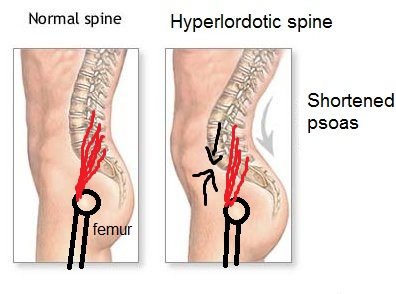
With this sort of structural force working against you, it is easy to see why good posture becomes hard to achieve. If your exercise regime makes your psoas tighter then this becomes a pattern you are reenforcing in your body, making good posture and ease of movement harder and harder to achieve.
When your Psoas is tight and short it becomes harder to properly activate your lower abdominals to stabilise your lower back. Your body then begins to rely on your Psoas for spinal stability. This has major implication for walking.
Your Psoas and walking
Your Psoas muscles are essentially a hip flexor, they are responsible for helping to lift your leg forward from your hip, something we do with each step we take. Being such a deep core muscle it has other functions as well, the Psoas major connects to the vertebrae of the spine, so it has a role to play in spinal mobility and stability also important for the micro movements of walking.
When the Psoas muscles are out of balance for example, one side is shorter than the other, this can result in a twisted pelvis. This will impact on the ability of the pelvis to ‘balance’ on top of the thigh bones with each step, requiring other muscles such as the deep hip rotators to grip down for stability and the mobility required for walking gets pushed up into the spine causing a lot of wear and tear on the lumbar vertebrae.
If the Psoas is tight and shortened this can result in Lumber Lordosis (as in the image above). In this position the upper body begins to ‘hang off’ the Psoas, leaving the abdominals to lengthen and let go. When the Psoas is under this strain all the time it’s function as a hip flexor is compromised, it pulls the femur (top of the thigh bone) forward in the hip socket and puts pressure on the front of the hip.
Walking with these patterns puts pressures on different parts of the body to compensate for these structural imbalances. Walking sets off a tight back or pinching at the front of the hips or knee pain. But really these issues are coming from the pelvic position set by your Psoas.
Healthy Psoas, healthy breath
Not only does our Psoas influence every step we take but it is also intimately connected to the diaphragm under our rib cage, so our Psoas also influences each breath we take.
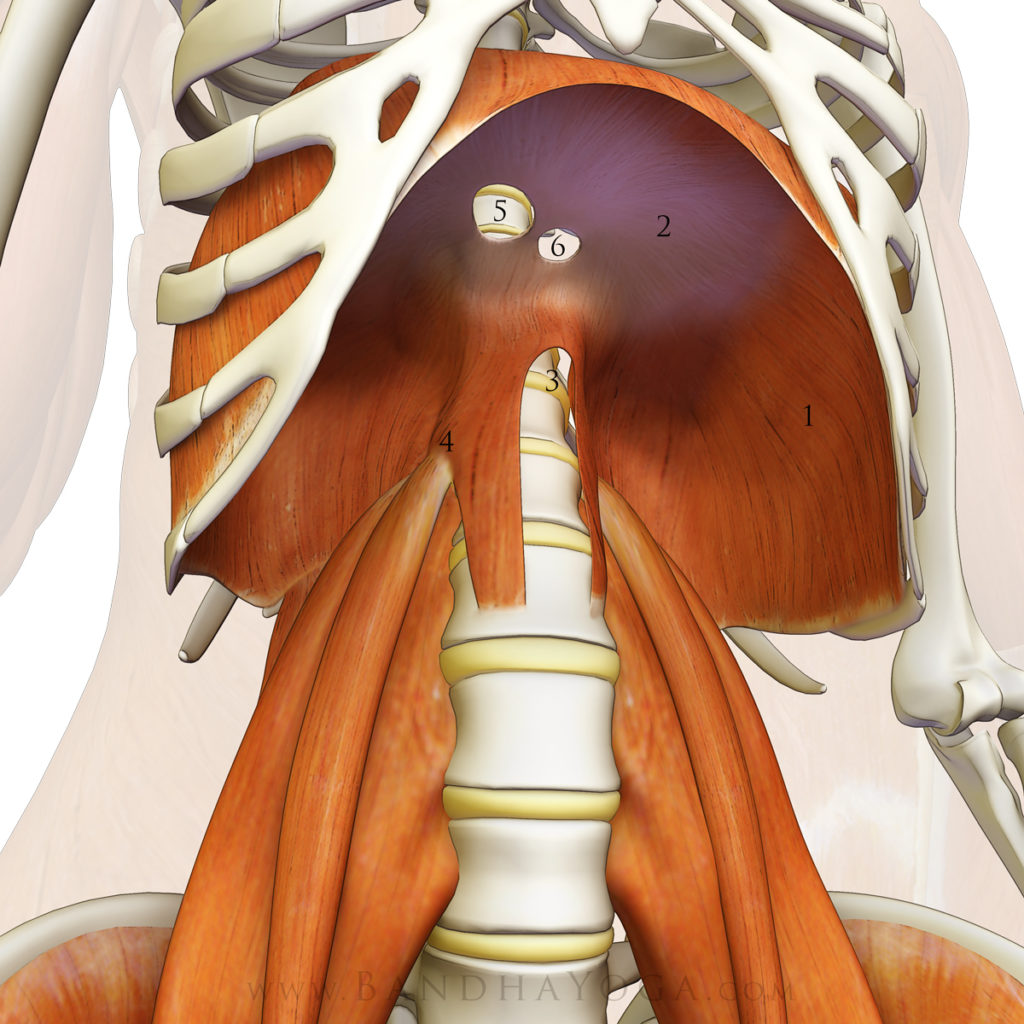
If our upper body is hanging off our Psoas, as described above, this tension pulls down on the back of our diaphragm flattening it. So to get all the air out of your lungs you now don’t have the full function of your diaphragm. And when you can’t get all the air out of your lungs you can’t get a full deep breath in.
Rib mobility is also impacted from the pull of a tight Psoas, making it harder for the lungs to fill and expand the rib cage.
All this does sound very depressing! And the impact on your life and movement can be! So let’s get to the move that will keep your Psoas supple and juicy.
Treat your Psoas, treat yourself
Self Assessment
To check your Psoas condition, lie flat on the floor and hug one knee up to your chest. If the back of your other thigh lifts off the mat you have a tight Psoas.
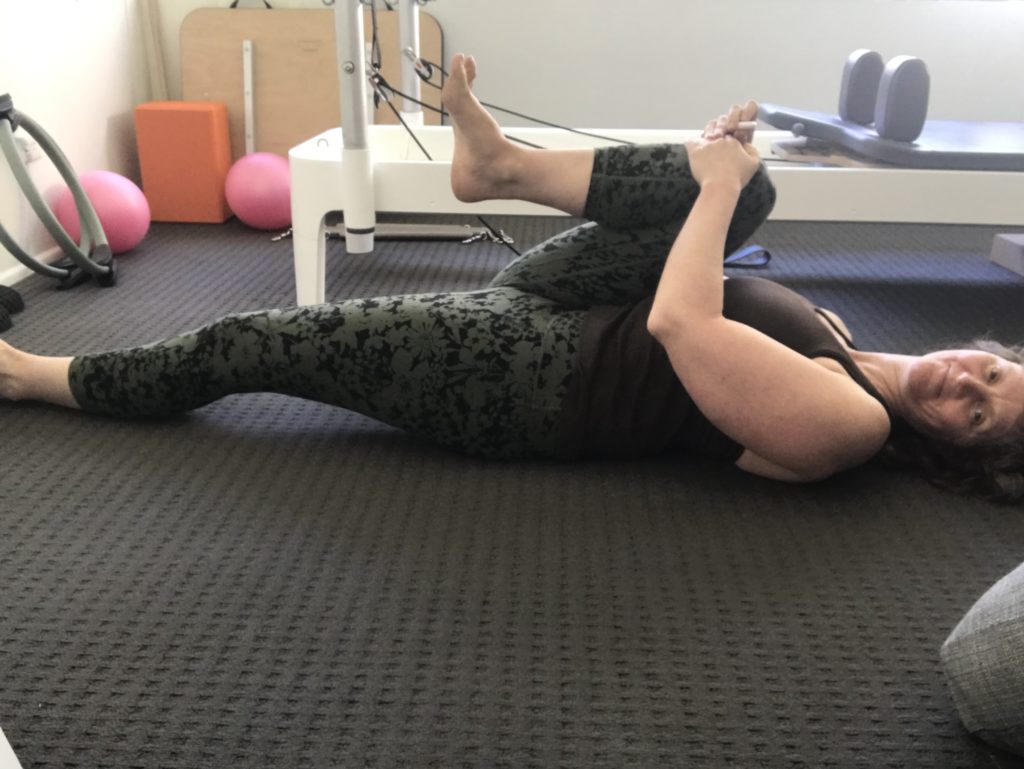
Psoas – relax and lengthen
To begin to release Psoas tension, gently is the only way to go. This requires no effort or force, rather this is a letting go of all doing, of all tension, to let your deep tissues relax and let go. Lie flat on the floor with a bolster or couch pillow under your shoulders and neck with nothing underneath your ribs, legs out straight. If that is too uncomfortable you put a roller or another pillow under your knees, so you can relax. Your job is to let go of all tension in your torso. I like to breath consciously into the back of my ribs. Eventually you want your ribs to drop down into the space that was under them, but this happens through surrender not through pushing them down.
Make this one a regular relaxing position and your Psoas will love you for it. Find excuses to get into this position, if your kids want you near them while they fall asleep this is a great position to get yourself in, if you have a projector and like to watch movies on the ceiling this is a great time to relax your Psoas, or make this part of your meditation practice.
Psoas massage
If you have a soft ball at home, this one is great especially for digestive issues associated with a tight Psoas. The ball needs to be very light and soft, placed to the side of your belly on top of your straight leg.
Psoas – lengthen and soften
Retest again
To be really clever we should do the Psoas test again to check in on tightness after we have completed these moves. So do that at least once or twice a week. To make progress and release Psoas tightness you will need a gentle approach and a fair bit of patience, think of it as a meditation practice rather than an ‘exercise’ or ‘workout’. This is about restoring function to deep muscles in your body. Reach out with any questions!
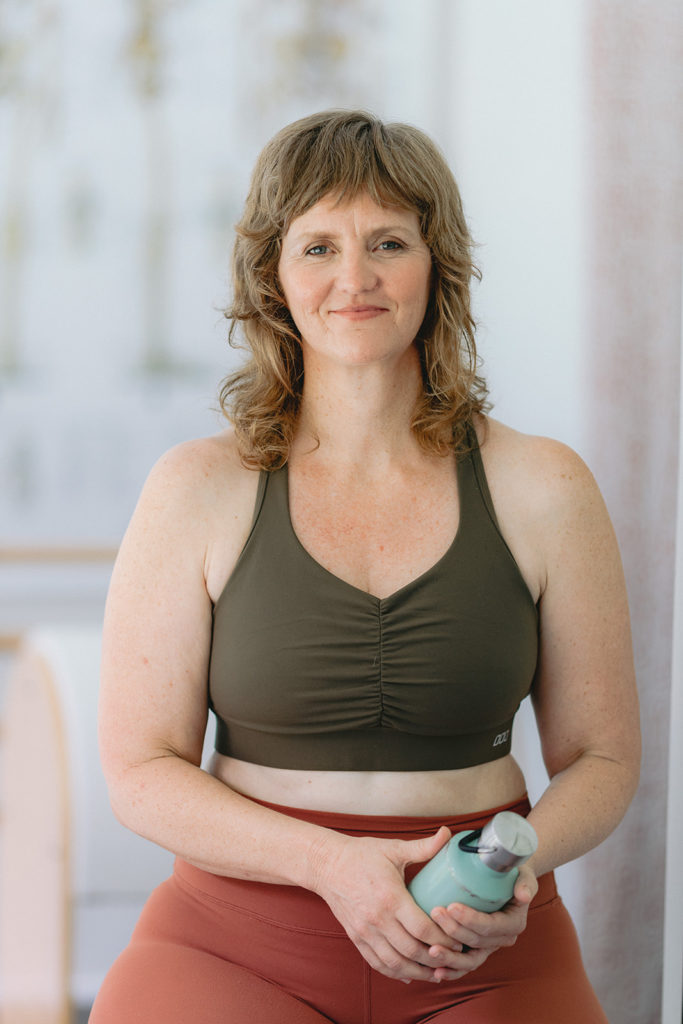
I am Brigid Pearse a certified Pilates instructor, Pregnancy and Post-natal Exercise Specialist, an ex-dancer and a mum. I run a fully equipped Pilates studio from my home in Lennox Head and I run community Pilates mat classes in Byron Bay, Ballina and online.
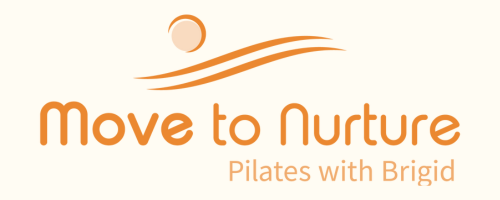
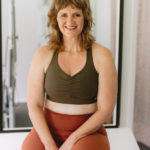
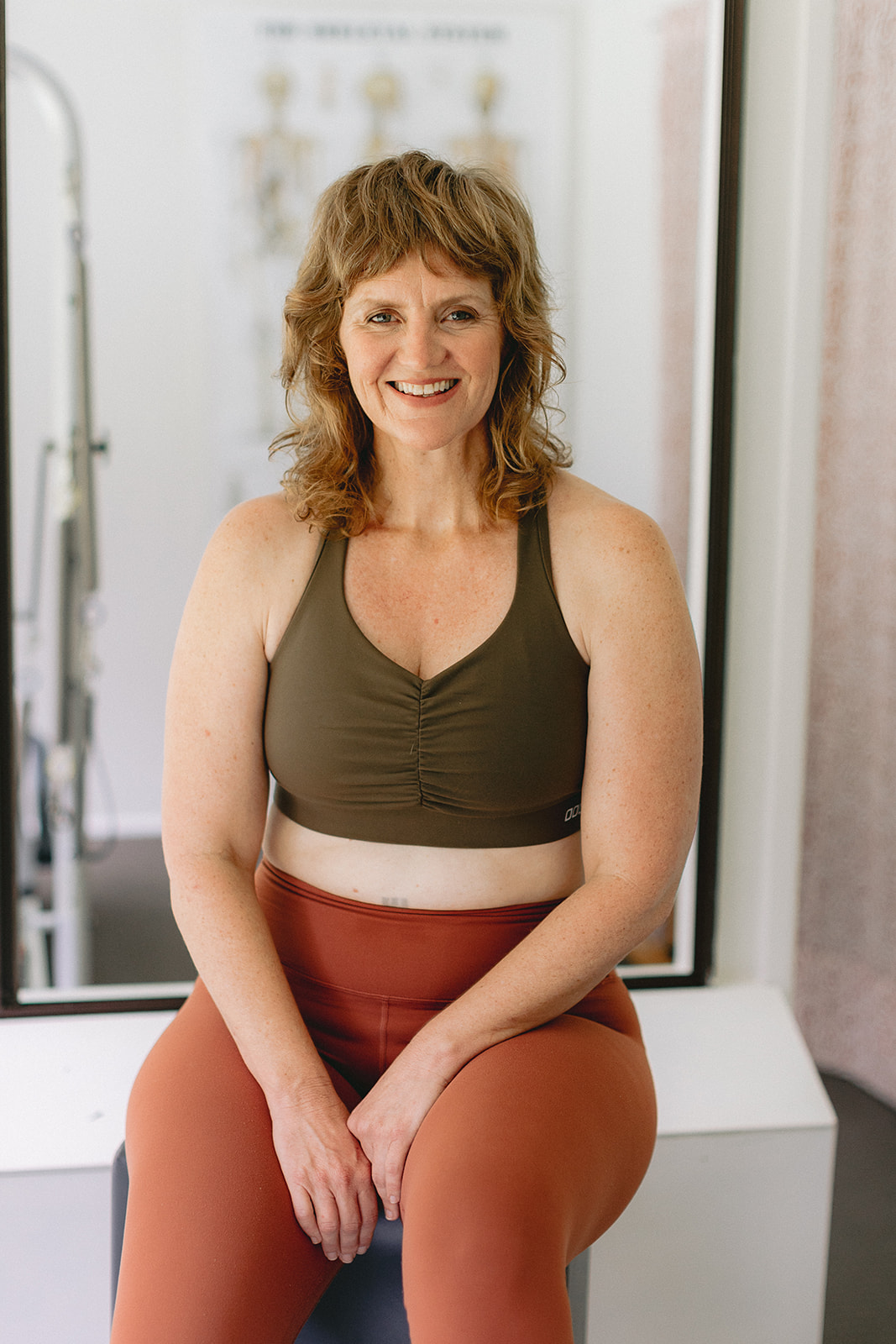



0 Comments
Trackbacks/Pingbacks